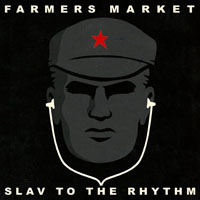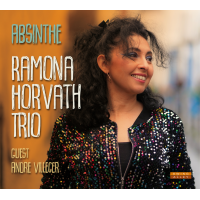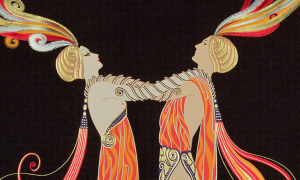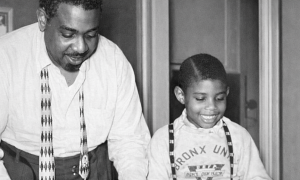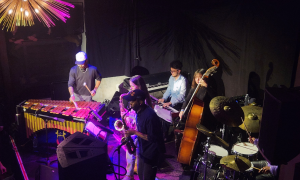Home » Jazz Articles » Jazz in the Aquarian Age » Sonny Rollins: A Diamond in the Rough
Sonny Rollins: A Diamond in the Rough

I’m a musician who’s constantly searching. I’m more or less a diamond in the rough, rather than a polished diamond. That’s the way I look at myself.
"Naturally you feel satisfied up to a point," he says. "But I have enough common sense, and I've been around long enough to know that there's no such animal in the first place, really. And also, so what if someone says that? What does it mean? Somebody will say 'he's a bum' in the Washington Post tomorrow, and the next day somebody will say 'he's great' in the New York Daily News. What difference does it make?"
Actually, to call Sonny Rollins today's greatest tenor saxophonist isn't just meaningless; it misses the point of Rollins' contribution to jazz. He merits a lot more consideration than a mere ranking on his instrument. He's among the most outstanding improvisational stylists in all of modern jazz. The trademarks of his approach are many: a sardonic sense of humor, an extraordinary harmonic imagination, remarkable structural ingenuity, and an exacting, incisive, authoritative way of playing.
Martin Williams, in The Jazz Tradition (Oxford University Press, 1970), refers to Rollins' improvisational technique as "spontaneous orchestration." Says Williams, "[His] performance builds from one phrase to the next, yet that structure is so logical and so comprehensive, with its details so subtly in place, that it as if Rollins had not made it up as he went along, but had conceived it whole from the beginning."
Born on September 7, 1930, Theodore Walter Rollins developed into a competent saxophonist so quickly that he had to change the date on his birth certificate in order to work in clubs. While still a young man, he worked with Miles Davis, Bud Powell, J.J. Johnson, Thelonious Monk, and the Modern Jazz Quartet. He was a member of the important Clifford Brown/Max Roach Quintet in 1956, and in 1957, with recordings like Saxophone Colossus, Tenor Madness, and Brilliant Corners with Monk, the critics recognized him as a new giant of the tenor sax. In 1959 he astounded jazz circles by announcing his temporary retirement. He left the scene for another sabbatical in 1968, when he took off to visit Japan and India and studied yoga, zen, and the theories of the Ghita.
 Rollins' most recent splash in the jazz world has been his highly successful cross-country tour with a group dubbed the Milestone Jazzstars, where he's joined by pianist McCoy Tyner, bassist Ron Carter, and drummer Al Foster. For the group's October 21 [1978] concert at the Beacon Theater in New York, one of the brightest moments was Rollins' unaccompanied solo sax workout, which began and ended with "Violets for your Furs," but included within it quotes from well over a dozen other tunes. Dressed in a dark suit and sneakers ("it's gotten to the point where I just have to wear them"), Rollins bobbed his head, seemed to stroll around the stage even when he was standing in place, and lifted his saxophone in the air with a triumphant flourish. He treated the audience to his thick, charged sound, his flow of line and feeling, his genius of rhythmic contrast, and everything else he's known for.
Rollins' most recent splash in the jazz world has been his highly successful cross-country tour with a group dubbed the Milestone Jazzstars, where he's joined by pianist McCoy Tyner, bassist Ron Carter, and drummer Al Foster. For the group's October 21 [1978] concert at the Beacon Theater in New York, one of the brightest moments was Rollins' unaccompanied solo sax workout, which began and ended with "Violets for your Furs," but included within it quotes from well over a dozen other tunes. Dressed in a dark suit and sneakers ("it's gotten to the point where I just have to wear them"), Rollins bobbed his head, seemed to stroll around the stage even when he was standing in place, and lifted his saxophone in the air with a triumphant flourish. He treated the audience to his thick, charged sound, his flow of line and feeling, his genius of rhythmic contrast, and everything else he's known for.Rollins has recorded two live albums in 1978 in two different settings. Don't Stop the Carnival (Milestone), features his own group, including pianist Mark Soskin, guitarist Aurell Ray, bassist Jerome Harris, and drummer Tony Williams, along with a guest appearance by [trumpeter] Donald Byrd. Another two-record live set under the Milestone Jazzstars name is scheduled for release early in 1979.
Jazz in the Aquarian Age: In the early 1970s, you were approached by a Japanese agent who had some contact with Chou En-lai about doing a concert with Art Blakey in China. You reportedly hesitated because you didn't want to go on an all-star ticket. That's a little ironic in light of the Milestone Jazzstars tour, isn't it?
Sonny Rollins: Well, we were just holding out for the possibility of taking my own group out there. A Japanese promoter that I knew—a fellow I had originally gone to Japan for back in the late '50s or early '60s—was married to a Chinese woman who was friends with Chou En-lai and the Chinese government. They tried to put it together, and it was supposed to happen, but unfortunately, ultimately as it was, the woman passed away at the time that we were talking about it, so it never got beyond that stage.
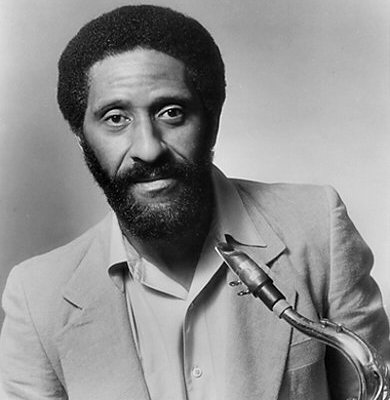 JAA: So there was no reluctance on your part, then, to go on the all-star Milestone Jazzstars package.
JAA: So there was no reluctance on your part, then, to go on the all-star Milestone Jazzstars package.SR: The tour was a tremendous promotional thing, because McCoy, Ron , and I are all with the same label, so the company was able to give all our records a boost by having us play together. This was one of the considerations that persuaded me to do it, but I wouldn't want to play in that context all the time.
JAA: Speaking of new records, besides your recent Don't Stop the Carnival on Milestone, There Will Never Be Another You, on ABC Impulse is a live recording, never before released, that was done at the Museum of Modern art in 1965.
SR: That performance is memorable to me because I used two drummers at the same time for that concert, and also the ambience of the museum was to my liking in that I was able to saunter around a little bit. There were a lot of works of art there in the museum's statuary garden, and there was also a pool there. I had to be careful not to hold my horn up too high or I would fall into the pool. I remember I came close to it several times... At the time that was made, I was making records for ABC, and I knew the performance was being recorded, but it wasn't supposed to be recorded as an album... It's just another case of a record company going through its archives and taking things and putting them out.
JAA: Outside of resting a bit after the Milestone Jazzstars tour, what's in store for you in the near future?
SR: Well, we're going to resume our concerts. We've got a few college dates coming up, and there's a tour of Japan coming up in the early part of next year. I'll be working with the same group that I played with at Newport last summer, with Al Foster, Mark Soskin, Jerry Harris and more, and Sammy Figueroa. Also, it's possible that we're going to start working on a motion picture.
JAA: That sounds interesting. I really enjoyed the music you did for Alfie.
SR: I'm glad you liked that. This will also be something of that sort, although it will be a story about the music in New York City—about myself and the people in New York playing music. It will be more concerning music; it won't be a background score.
JAA: Will this be a feature film?
SR: It will be a feature film. We're planning on that. A good friend of mine from Switzerland, Michel Contat, will be doing the film. Finances are in the process of being gathered, and we hope to be shooting in about seven months or thereabouts. It'll be mainly about me, I guess, but not really, because it'll also be about the music of the people that I play with and have played with, and people that play in New York City. It'll also be about a lot of things that happen in the city, and how the city has been a catalyst for a lot of the music that has come out. We haven't got everything done yet, but the script is being readied. JAA: The Milestone Jazzstars tour put you in an acoustic setting, with none of the electric instruments you've used in your own groups lately. Will you going back in this direction with your own groups, too?
 SR: Well, I'm not really too much into acoustic versus electric. I'm more interested in using whatever sounds good in a particular context, and whatever I can relate to as a musician that can be compatible with me, Sonny Rollins. So it doesn't matter if it's electric or acoustic, as long as it can fit into what's happening at the time.
SR: Well, I'm not really too much into acoustic versus electric. I'm more interested in using whatever sounds good in a particular context, and whatever I can relate to as a musician that can be compatible with me, Sonny Rollins. So it doesn't matter if it's electric or acoustic, as long as it can fit into what's happening at the time.JAA: Even though you've used electric instruments a good deal in your groups, you've never actually gotten into it much with your own instrument. For example, you've never used any of those new electronic devises they've devised for the saxophone.
SR: No, I haven't. There are some things that can be done, but you've got to be careful with those things because the sax then becomes a different instrument. I've tried out a few of them, but if I'm going to plug in a sax just to sound like five saxophones playing at the same time, or to sound like a guitar, then there's really no purpose in doing it.
You know, a lot of that stuff I can do without any electronics. In fact, I think they got the idea for the Varitone from me. A representative of that company had heard me playing when I was trying to play two or three notes at the same time, and not long after that they came out with the Varitone, which did something very similar. I hate to be quite that immodest about it, but it is possible that it was influenced by what I was doing. But nevertheless, I think that you can get a lot of sounds out of the horn itself without all that stuff.
JAA: Have you read what Max Roach said about you in Downbeat recently? He seemed to be criticizing you for the direction you've taken in recent years. He said that it's OK for players like Stanley Turrentine to sound like Stanley Turrentine, but when Sonny Rollins tries to sound like Stanley Turrentine because a producer thinks he should, Sonny Rollins isn't being fair to his audience.
 SR: Well, I've known that Max felt that way for some time, so I'm not surprised by it.
SR: Well, I've known that Max felt that way for some time, so I'm not surprised by it.JAA: So, is Max a little bit off base then?
SR: No, I don't think so, because Stanley Turrentine lists me as one of his all-time favorite horn players. There have been many times that he's said that what he's doing is trying to play like me—it's his version of playing like me. So it is possible that there might be some similarity in our playing. I don't have to get upset about that.
JAA: I've read that all through your life you've had problems with your teeth. Have they been bothering you lately?
SR: No, not for the past six months or so. I've got a continual problem, but I haven't been bothered a whole lot in the past six months. It's always a problem, and I've got to be careful not to cause any real damage. It interferes with my playing, and sometimes I have to lay off until I can play again.
JAA: Playing doesn't aggravate it, does it?
SR: Oh yeah, it does.
JAA: Have you been able to do just about everything you've wanted to on your horn within those six months?
SR: Oh no, of course not. But I'm able to start trying to, and I can get in a lot of work that I couldn't before. I'm always a hard person to really feel pleased about my stuff because of the type of musician I am. I'm a musician who's constantly searching. I'm more or less a diamond in the rough, rather than a polished diamond. That's the way I look at myself, and I've been described as that by one of my producers. And I think it's true because all through my live I've been developing. And it's just as well for me because it keeps me interested, and I'm never going to sound exactly the same twice. As long as the people like it, it's all right with me, because that's what I am—that's where I'm at.
I just try to keep an even keel, never mind whether they say you're great or they say you're not great. As long as you have the wherewithal to continue plying your trade, that's what you have to do.
I've learned just to try to know what I'm doing as an artist and to try to get it out—create the music, and that's it. And if they like it, OK. And if they don't, OK, as long as they know what I'm trying to do. If I can get to the place I'm trying to get to myself, then I'll be happy, and to hell with everybody else. [Adapted from an article originally published in The Aquarian Weekly, Dec. 13—20, 1978.]
[The collaboration that Rollins mentioned with filmmaker Michel Contat in the late '70s apparently never came to fruition. But, before long, the saxophonist teamed up with director Robert Mugge for a documentary called Saxophone Colossus, released in 1986 and available on DVD. Saxophone Colossus: A Portrait of Sonny Rollins (Abrams, 2010) is a notable recent book on Rollins, which, like the 1986 film, borrows its title from Rollins' iconic 1956 album for the Prestige label. The publication features photographs by John Abbott and text by Bob Blumenthal.]
Selected Discography
Sonny Rollins, Road Shows, Vol. 2 (Doxy, 2011) Sonny Rollins, Road Shows, Vol. 1 (Doxy, 2008) Sonny Rollins, Sonny Please (EmArcy/Doxy, 2006) Sonny Rollins, Without a Song: The 9/11 Concert (Milestone, 2005) Sonny Rollins, Sonny Rollins +3 (Milestone, 1995) Sonny Rollins, The Solo Album (Milestone, 1985) Milestone Jazzstars, In Concert (Milestone, 1979) Sonny Rollins, Don't Stop the Carnival (Milestone, 1978) Sonny Rollins, There Will Never Be Another You (ABC Impulse, 1978 [recorded 1965]) Sonny Rollins, Nucleus (Milestone, 1975) Sonny Rollins, Sonny Rollins' Next Album (Milestone, 1972) Sonny Rollins, Alfie (Impulse, 1966) Sonny Rollins, The Bridge (RCA, 1962) Sonny Rollins, A Night at the Village Vanguard (Blue Note, 1957) Sonny Rollins, Way Out West (Contemporary Records, 1957) Thelonious Monk, Brilliant Corners (Riverside, 1957) Sonny Rollins, Tenor Madness (Prestige, 1956) Clifford Brown and Max Roach, At Basin Street (Polygram, 1956) Sonny Rollins, Saxophone Colossus (Prestige, 1956) Thelonious Monk and Sonny Rollins, Thelonious Monk/Sonny Rollins (Prestige, 1954) Miles Davis, Bags' Groove (Prestige, 1954) Miles Davis, Dig (Prestige, 1951) Sonny Rollins, Sonny Rollins with the Modern Jazz Quartet (Prestige, 1951) Bud Powell, The Amazing Bud Powell (Blue Note, 1949) J.J. Johnson, Mad Bebop (Savoy, 1949)
Photo Credits
Page 2: Milestone Records Page 3: Brian McMillen
Tags
PREVIOUS / NEXT
Support All About Jazz
 All About Jazz has been a pillar of jazz since 1995, championing it as an art form and, more importantly, supporting the musicians who make it. Our enduring commitment has made "AAJ" one of the most culturally important websites of its kind, read by hundreds of thousands of fans, musicians and industry figures every month.
All About Jazz has been a pillar of jazz since 1995, championing it as an art form and, more importantly, supporting the musicians who make it. Our enduring commitment has made "AAJ" one of the most culturally important websites of its kind, read by hundreds of thousands of fans, musicians and industry figures every month.




